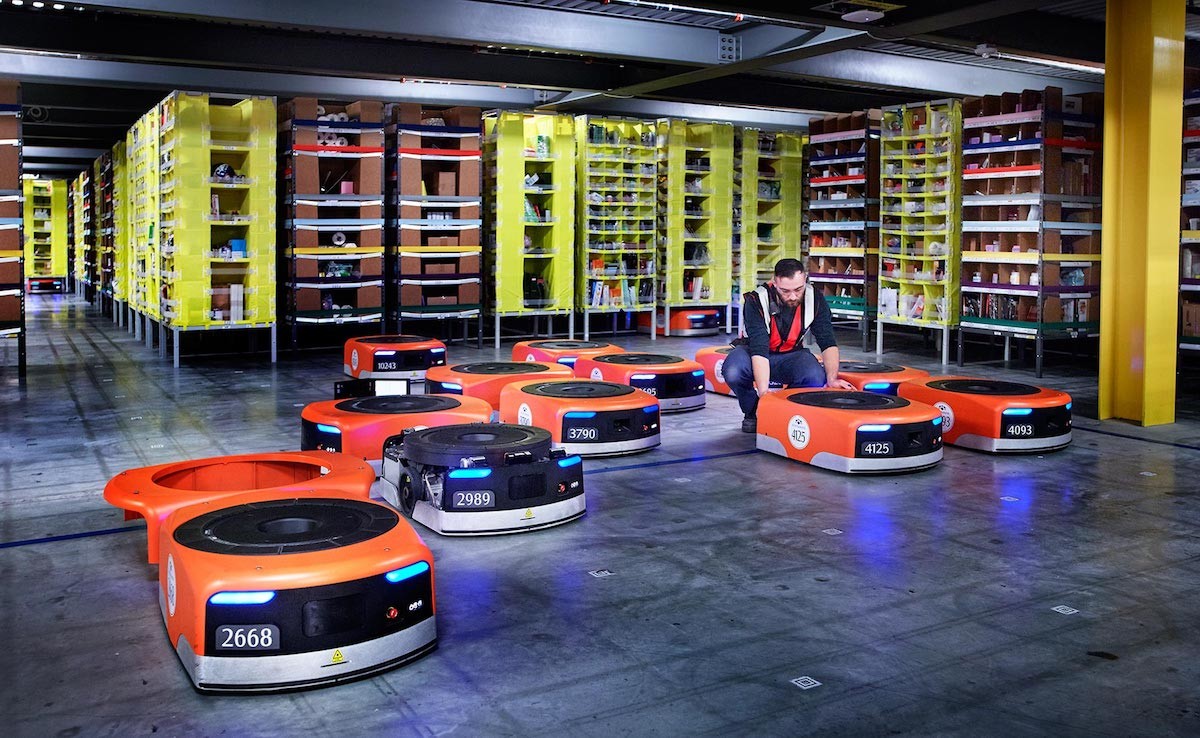Amazon has introduced a new fleet of smarter robots, including Proteus and Sparrow, to work alongside humans in their fulfillment centers. These robots are designed to be more expressive and aware of their surroundings than previous industrial robots, with the aim of improving efficiency while providing a friendly face for workers. This article explores how these machines could shift the balance between automation and people at Amazon and across the industry. We also look at how jobs may change as robotics continues to evolve. Amazon’s Smart Robots: A New Revolution of Automation
Meet Proteus
Proteus is one of Amazon’s latest additions to its robot workforce; it looks like a green footstool from the future with round eyes and small lidar sensors that scan nearby objects in 3D. Its mouth flashes different colors to signal whether it is happy or stuck, while its heart-shaped eyes show when it has completed tasks successfully.
Sophie Li, an engineer at Amazon Robotics who worked on Proteus, says that expressing happiness can help improve interactions between robots and humans working together. The company hopes that by using friendlier-looking machines like Proteus, they will boost morale among its human staff.
The Rise of Smarter Robots
Amazon has been ramping up its use of automated technologies since acquiring Kiva Systems in 2012; however, these newer robots are much more advanced than their predecessors. Sparrow is another example—a machine capable of picking individual products out from storage cubbies with human-like dexterity—bringing us closer to achieving “holy grail” levels in robotics technology.
As these smarter machines move into fulfillment centers worldwide, some jobs will disappear while others emerge; this shift could potentially have far-reaching implications for both employees’ roles within Amazon as well as competitors forced to adapt or perish under changing market conditions.
Manufacturing Jobs on the Rise
While introducing more efficient robotic systems can ease pressure on human workers during peak periods, robots need to be built and maintained by humans too. Amazon’s increased focus on automation has led to a significant rise in the number of manufacturing jobs within the company.
At one production line near Proteus’s testing site, workers are assembling these machines with the help of mechanical arms and installing sensors, electronics, and motors. However, as some roles shift towards robot maintenance or manufacturing positions instead of traditional warehouse work at Amazon; others may disappear altogether.
The Future Looks Bright for Robotics
Amazon continues its rapid expansion into robotics technology with no sign of slowing down anytime soon. With three-quarters of all products handled by their robots worldwide across more than 300 fulfillment centers globally today—increasingly intelligent machines like Proteus will only continue evolving alongside human counterparts as time marches on.
Amazon’s Smart Robots: A New Revolution of Automation written by Hoda F.
Learn here to get the latest Technology Industry News.
You can also reach out our social media team by following our pages on Facebook, Instagram and Twitter.


